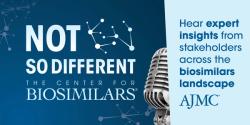© 2025 MJH Life Sciences™ and The Center for Biosimilars - Biosimilars, Health Economics & Insights. All rights reserved.
Future Biosimilar Trends, Challenges, and Opportunities
Ivo Abraham, PhD, RN, University of Arizona Cancer Center, explains how biosimilars are becoming more accessible but face challenges like price erosion and potential shortages.
Ivo Abraham, PhD, RN, director of the Center for Health Outcomes and PharmacoEconomic Research at the University of Arizona Cancer Center, discusses the evolvement of the biosimilar landscape throughout the years in an interview with The Center for Biosimilars®.
Abraham addresses both biosimilars and generics, highlighting their potential to provide more access to patients at lower costs while recognizing the challenges of marketing biosimilars and the need for volume contracts to stay competitive.
This transcript was lightly edited for clarity.
Transcript
The biosimilar landscape is constantly evolving. What emerging trends in health economics or clinical research do you see impacting the future of biosimilar development and access?
Price erosion is one because it can only go so low. We need to make sure that this does not threaten the biosimilar manufacturing side of the formulary. They have more costs to recover, so there needs to be some way, and it's probably going be more of a coordinated way of limiting the price erosion that we see for the reference products. We know a lot of those costs have already been recouped, whereas a biosimilar company still has to do that. Also, we are seeing the high volume agents that the manufacturer or the reference product is willing to go very, very low in terms of their price because it's made up in part by volume. That's an important aspect.
The other aspect that we need to take into account is we're not going to have influence over which biosimilar you're administered. It's the same thing as with a generic. You can go to the pharmacy and receive a 3-month supply from one company, and 3 months later, it may be another company just because your payer has different contracts or your pharmacy provider.
Dealing with the fact that we're talking about commodity markets, and as we've seen shortages in generic cancer drugs, for instance, manufacturers of generics are pulling out of producing certain treatments because of the margin being so minimal. This is not treating hypertensive patients, where you have millions and millions and millions. Just in the US, you may be talking about a much smaller patient population.
Another thing that is important is that, in the US, we need to let go of our xenophobism, that things that come from abroad are not good. When we talk about biosimilars, we're going to have to take into account that we have now entered also an era of bioparallels. These are products developed somewhere else, are of very high quality, very well researched, with clinical trials and so on, and will enter the US market or are entering the US market at a significant price discount relative to other very well-established products—and I'm referring to PD1 inhibitors—and will provide more access to more patients at potentially lower cost.
What we also need to take into account is that especially the manufacturers of biosimilars that also manufacture generics bundle their products. For instance, have a bundle of chemotherapy agents, not biologic agents, but chemotherapy agents with then a biosimilar of a biological product.
For instance, the first line of breast cancer treatment is highly myelotoxic. Patients are at very high risk of developing neutropenia or febrile neutropenia. Why not, as a manufacturer of generics and biosimilars, create a breast cancer bundle of products? Then the products could be priced accordingly and be sold to payers, providers, and patients.



